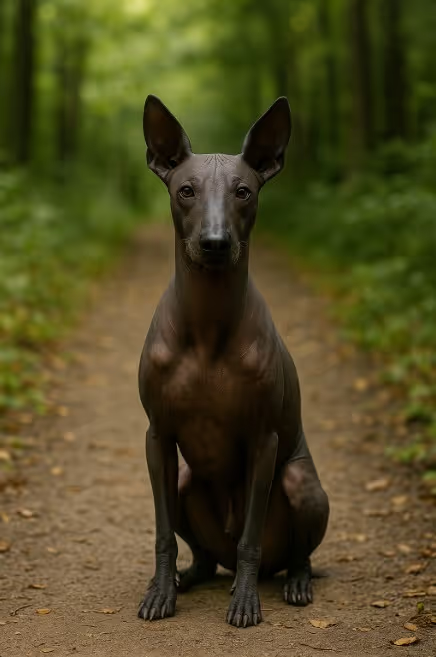The Peruvian Inca Orchid is an elegant, sensitive, and affectionate hairless (with coated variety) sighthound-type companion from Peru. Calm indoors and playful outside, this people-focused dog is ideal for allergy-conscious households seeking a low-shedding pet that still needs thoughtful skin care, sun protection, and warmth in Canadian winters. If you’re wondering “Are Peruvian Inca Orchids hypoallergenic?” — they’re low-allergen (especially hairless), but no dog is 100% hypoallergenic.

An ancient Peruvian breed depicted in pre-Columbian art, the Peruvian Inca Orchid (PIO) likely predates the Inca Empire. Bred as warm-bodied companions and alert watchdogs, they were prized for their hairlessness and affectionate nature. Modern preservation in Peru led to formal standards and FCI recognition, with three sizes (Small/Medium/Large) and two varieties: Hairless and Coated. Though still rare in North America, the PIO has a devoted global following.
A refined, athletic dog with an elegant outline; hairless skin is smooth and warm to the touch.
Minimal brushing; skin care is the priority (especially for hairless).
Moderate, with short bursts of speed—protect skin in sun/cold.
Sensitive, intelligent, and eager to bond—gentle methods shine.
Balanced diet to support skin health and a lean, athletic frame.
Generally healthy; hairless genetics bring specific considerations.
Rare—plan ahead, verify health testing, and expect support on skin/dentition care.
Are Peruvian Inca Orchids hypoallergenic?
Low-allergen (especially hairless) but not guaranteed hypoallergenic—meet a PIO first.
Do Peruvian Inca Orchids shed?
Hairless: virtually none. Coated: low. Both need routine skin/coat care.
How much exercise do they need?
About 45–60 minutes daily plus mental games; protect from sun/cold.
What skin care do they need?
Gentle cleansing, occasional moisturizing, dog-safe sunscreen, and winter clothing; avoid heavy oils and harsh products.
Are PIOs good apartment dogs?
Yes—quiet, clean, and adaptable with daily exercise and enrichment.
Are they good with kids and other pets?
Affectionate with family; supervise with small children (thin skin) and introduce pets thoughtfully.
Hairless vs. Coated—what’s different?
Hairless need consistent skin/sun/cold management and may have fewer teeth; coated shed lightly and need simple brushing.
Do they bark a lot?
Typically moderate—teach a “quiet” cue and provide outlets for energy and engagement.